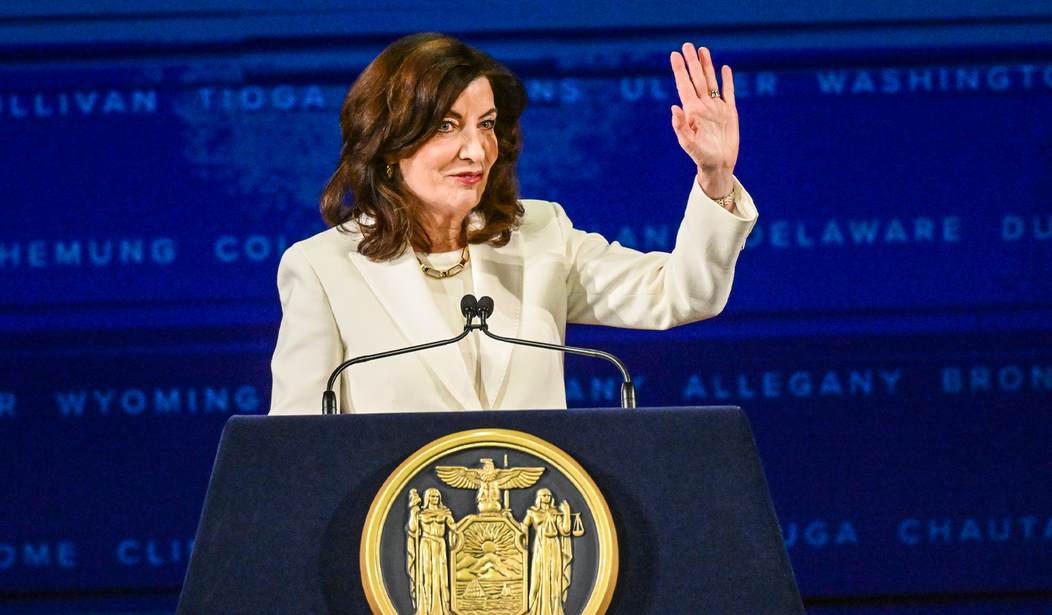In the wake of the mass shooting at a Buffalo, New York grocery store last year, Gov. Kathy Hochul demanded the New York State Police begin filing Extreme Risk Protection Orders at every available opportunity. Since then the number of ERPOs filed has increased by more than 1,000%, even though two sitting state Supreme Court justices have ruled that the “red flag” law is unconstitutional.
Now the the union representing rank-and-file state police officers is weighing in as well, criticizing Hochul’s policy for leaving them so focused on seizing guns that they have little time or resources to investigate serious crimes.
Tim Dymond, president of the New York State Police Investigators Association, said their members are “asking for help.” They commended Gov. Kathy Hochul for increasing funding to the agency in the recently approved budget but noted that impact will not be felt for at least six months.
The Times Union reported last week that the number of firearms being seized by police from individuals found to be “likely” at risk of harm to themselves or others has soared so much in the past year that evidence rooms in some State Police barracks have had to be reconfigured or expanded to store the weapons.
The increase follows an executive order issued last year by Hochul that mandated troopers file court applications for “extreme risk protection orders” — known as “ERPOs” — whenever they encounter a person who is believed to be a danger and in possession of a firearm.
“The spike in ERPOs has created an unmanageable workload that will undoubtedly cause other criminal investigations to suffer,” Dymond said in a statement Thursday. “We recognize the importance of ERPOs and we agree that persons whom are a threat to themselves or others should not have guns. We are also realistic in noticing when our people are overwhelmed. ERPOs are important but so are murder, rape and robbery investigations. We still need to be able to investigate local burglary rings. We still need to track down child predators and drug dealers.”
In 2020, judges issued protection orders against 255 people across New York. This year, in just over four months, the number of individuals subjected to emergency or temporary risk protection orders topped 2,120. And between 2020 and last November, State Police had seized 2,521 firearms under emergency protection orders — a figure that does not include seizures made by more than 150 other New York police agencies.
While the police union may be concerned that the “red flag” mandate from Hochul is keeping them from investigating serious crimes, gun owners should also be troubled by the huge increase in gun seizures related to ERPO orders. While we know how many individuals have been subjected to a “red flag” order this year, it’s been impossible for me to find out how many petitions have been rejected by judges. I can’t help but wonder how many of these judges have been rubber-stamping their approvals rather than actually weighing the (limited and one-sided) evidence presented to them on the premise that it’s better to confiscate the firearms from someone rather than risk being wrong about their “dangerousness” and leaving them armed. The only hard data that I’ve been able to come up with comes from the D.A. in Orange County, New York, who said last month that since August of 2022 his office has filed 150 “red flag” petitions, 109 of which have been approved. At least one of those petitions that was initially approved was later overturned by a judge, who ruled that the lack of any mental health evaluation deprives those subjected to a “red flag” order their right to due process.
That decision isn’t binding statewide, however, and the use (and abuse) of the state’s ERPO statute is continuing all the while; not only infringing on the rights of New York residents, but helping violent offenders avoid consequences for their crimes by taking police resources away from criminal investigations that could put them behind bars.
Read the full article here


